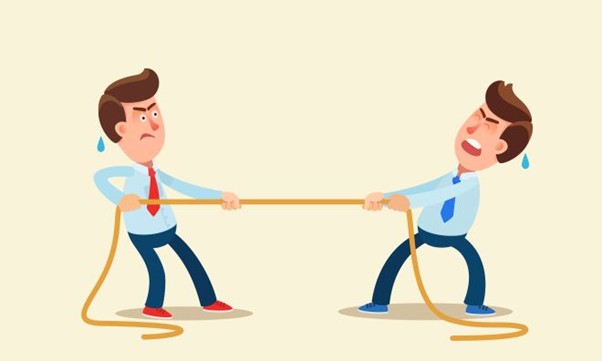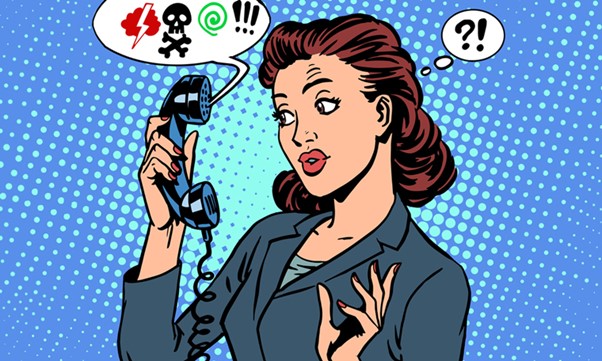Every salesperson, no matter how experienced, has faced the dreaded difficult customer. They’re the ones who push back on every detail, question your expertise, or seem impossible to satisfy. But here’s the truth: behind every difficult customer is psychology at play. If you understand what’s driving their behaviour, you’ll know how to respond—and even turn them into loyal buyers.
At KONA Training, we believe that mastering the psychology of customers—especially difficult ones—is a critical skill for salespeople. Let’s break down why customers act the way they do, and how you can approach them with confidence.

Why Customers Become “Difficult”
Not every customer is intentionally trying to make your life hard. In fact, most “difficult” behaviour comes from deeper emotional or psychological needs. Here are some common drivers:
Fear of making the wrong decision
Customers who stall, nitpick, or ask endless questions often aren’t being difficult—they’re afraid. The wrong purchase could mean wasted money, wasted time, or risk to their reputation. Their resistance is actually about self-preservation.
Desire for control
Some customers want to feel like they’re in charge of the buying process. If they sense you’re steering too aggressively, they push back. For them, saying “no” is a way to regain power.
Past negative experiences
Customers may have been burned before by pushy sales tactics or poor service. That history colours their behaviour, making them more guarded or skeptical.
Different personality types
A high-detail, compliance-driven customer will ask endless technical questions, while a dominance-driven customer might challenge your authority. This is where tools like DISC profiling—something we emphasize at KONA Training—help salespeople adapt their approach.

The Mindset Shift Salespeople Need
The first mistake many salespeople make is taking customer resistance personally. Difficult behaviour isn’t about you—it’s about the customer’s internal drivers. When you reframe a “difficult customer” as simply a “customer with unmet needs,” you immediately shift into problem-solving mode.
At KONA Training, we teach salespeople to approach resistance with curiosity instead of frustration. Ask yourself:
• What’s really going on here?
• What fear, need, or experience is shaping this reaction?
• How can I adapt my approach to meet them where they are?
Practical Strategies to Win Them Over
- Listen Twice as Much as You Speak
When dealing with a difficult customer, resist the urge to over-explain. Instead, let them talk. Active listening not only gives you insight into their concerns but also builds trust. Customers who feel heard are far more likely to soften their resistance. - Acknowledge Their Concerns
Never dismiss objections or frustration. Phrases like, “I completely understand why you’d feel that way” validate their emotions. This simple step disarms defensiveness and shows empathy—something we stress heavily in KONA Training’s sales workshops. - Use the Power of Questions
Rather than telling customers why they should buy, ask questions that guide them to their own conclusions. For example:
• “What would success look like for you in this decision?”
• “If we could solve X, would that make you feel more confident moving forward?”
This approach shifts the dynamic—you’re no longer “selling,” you’re helping them solve a problem. - Stay Calm Under Pressure
Difficult customers may raise their voice or challenge your expertise. The worst thing you can do is mirror that energy. Staying calm and professional signals strength and builds credibility. At KONA Training, we equip salespeople with techniques to manage stress so they never lose composure. - Focus on Value, Not Just Price
Many “difficult” customers seem obsessed with discounts. But often, price is just a stand-in for deeper concerns about value. Instead of haggling, reframe the conversation around outcomes, benefits, and long-term results.

Turning Resistance Into Loyalty
Here’s the fascinating part: once you win over a difficult customer, they often become your most loyal advocate. Why? Because you’ve proven you can handle their concerns, respect their perspective, and deliver value under pressure.
We see this transformation all the time in KONA Training programs. Salespeople who once dreaded difficult clients learn to thrive with them. And more importantly, they start to view these interactions not as obstacles—but as opportunities to shine.
Difficult customers are part of sales. But when you understand the psychology behind their behaviour, you gain the power to respond strategically instead of emotionally. You build trust, showcase your professionalism, and often close deals that seemed impossible at first.
At KONA Training, we specialise in equipping salespeople with the skills, strategies, and psychology needed to handle any customer with confidence.
If your team could benefit from mastering the art of dealing with difficult customers, contact KONA Training today for tailored Sales and Customer Service Training that delivers real results.
Call 1300 611 288 or Email info@kona.com.au
Author – Garret Norris – https://www.linkedin.com/in/garretnorris/



















































































